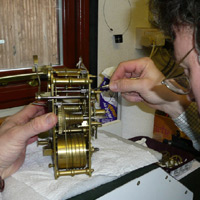| |

|
|
| |
|
|
| |
|
|
| |
|
|
|
| |
| Clock Movement Restoration
|
| An early 19th century wall clock
- DENT |
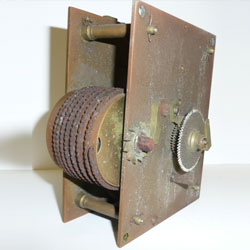 |
This important
movement was manufactured by the London firm DENT - most famous
for producing the movement for London "Big Ben".
After careful dismantling and cleaning the movement is re-assembled,
lubricated and ready to run.
The valuable patination of the old brass is still in tact
due to professional and ethical treatment. |
|
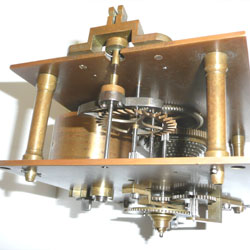 |
| |
|
|
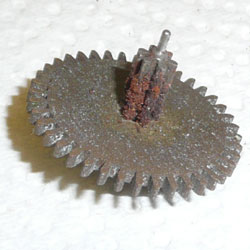 |
A close
up of a wheel shows how harmful oxidation deposits are carefully
removed and gentle cleaning conserves the fragile but valuable
patination of the antique brass beneath. |
|
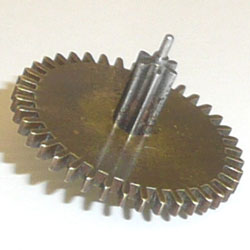 |
|
|
|
| |
|
|
| |
| A late 18th century white
dial clock dial |
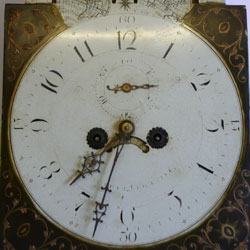 |
This
quality longcase clock had been stored innapropriately
for many years. A full restoration to the case and movement
were necessary to return the clock to working order.
The dial was carefully cleaned and restored by our
specialist dial conservator. The final result is extremely
impressive, and of course adds a lot to the final value.
|
|
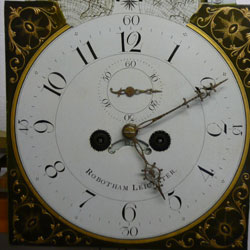 |
|
A French carriage clock
in for service |
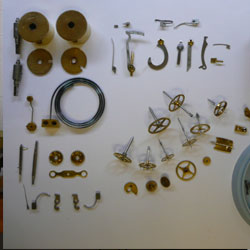 |
This
French carriage clock was
retailed by The Goldsmiths Company, Newcastle and dated
from 1890.
We service and maintain all types of antique clock
, and are at your service for all of your timepiece
requirements.
|
|
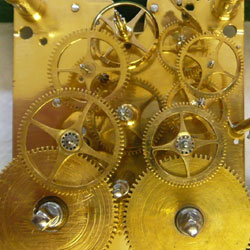 |
| |
|
|
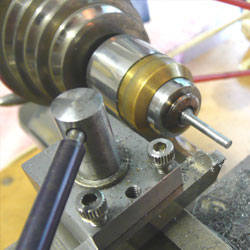 |
All
conservation/restoration
work is undertaken by our clock conservator (Dip.
West Dean), he is an Antiquarian Horologist and
a Member of the British Clock & Watchmakers’
Guild. We specialise in the Conservation and Restoration
of 17th - 19th Century clocks |
|
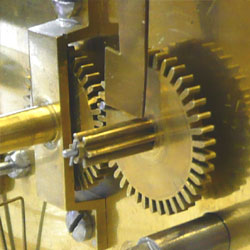 |
|
|
|
| |
|
|
| |
| A late 18th century satinwood cased
white dial clock |
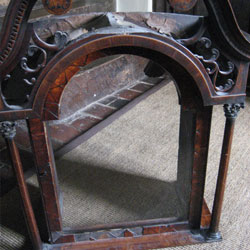 |
This unusual
clock had been stored innapropriately for many years. A full
restoration to the case and movement were necessary to return
the clock to working order.



|
|
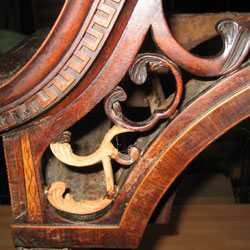 |
| |
|
|
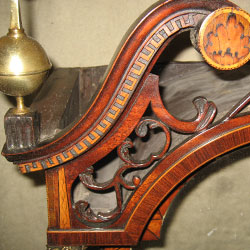 |
The
replacement carving was matched with the original, and many
missing sections of banding had to be hand cut from the solid.



|
|
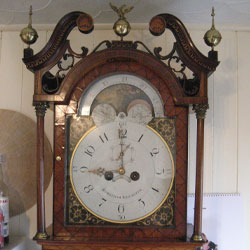 |
|
|
|
| |
| An early 18th century Boulle marquetry
clock and bracket |
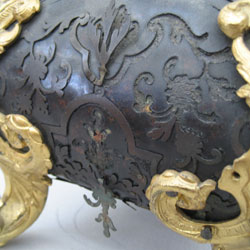 |
This Boulle
style clock case required extensive restoration. Approximately
25% of the brass and 10% of the turtle-shell was missing.
The remaining marquetry needed removing to stabilise the substrate



|
|
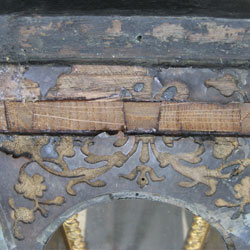 |
| |
|
|
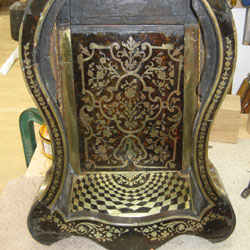 |
The ormolu
mounts carried a duty stamp for 1740 allowing accurate dating.
Working alongside a clock conservator and with specialist
restoration to the enamel dial the treatment was a great success |



|
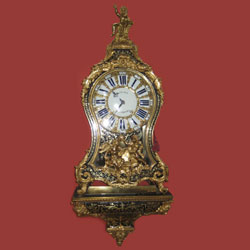 |
|
| An important Late 18th century Japanned
clock by Claude du Chesne |
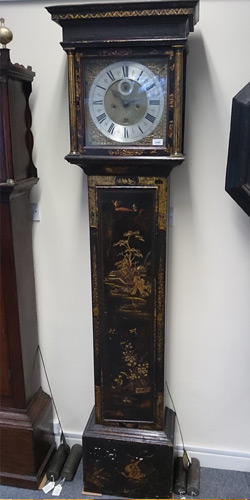 |
This late
18th century Lacquered Longcase clock was from the workshops
of Claude du Chesne, an Important Hugenot clock maker with
examples of his work in the Victoria and Albert museum.

The case needed a full restoration as the Japanned
finish was lost on the sides and badly damaged on the front.
The base of the trunk was lost completely. |
|
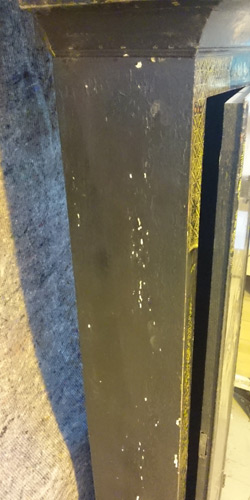 |
| |
|
|
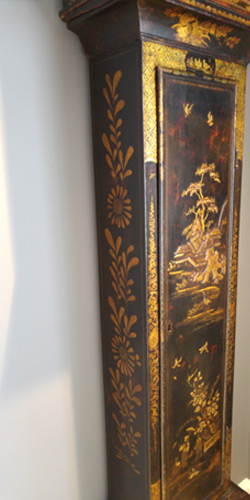 |
The new
Japanning needed careful matching and toning of the gold leaf
to match the original work, followed by a good quality wax
finish to help protect the surface from future damage. |

The Japanning
of the sides were reproduced from existing examples and the
design is based on stylised chrysanthemums, a popular chioiserie
motif. |
|
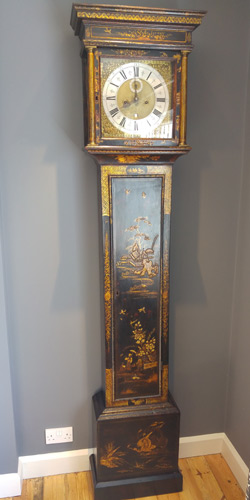 |
|
|
|
| |
|
|
| |
|
|
| |
|
|
 |
|
|

